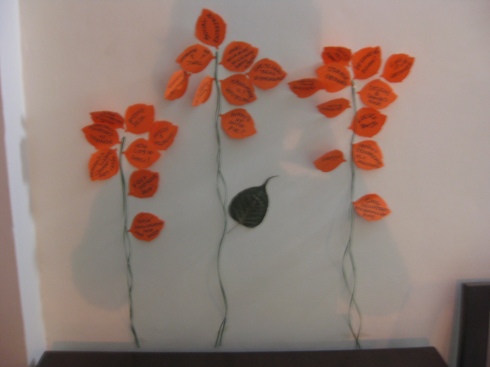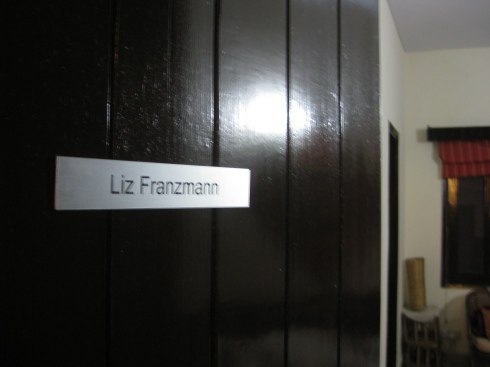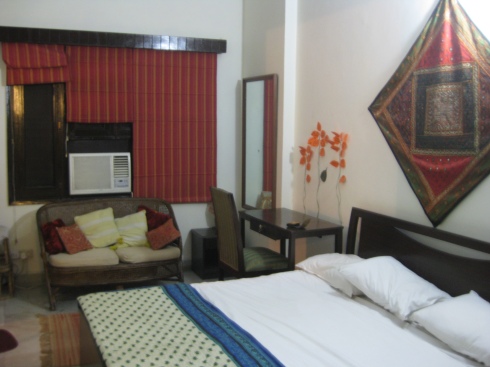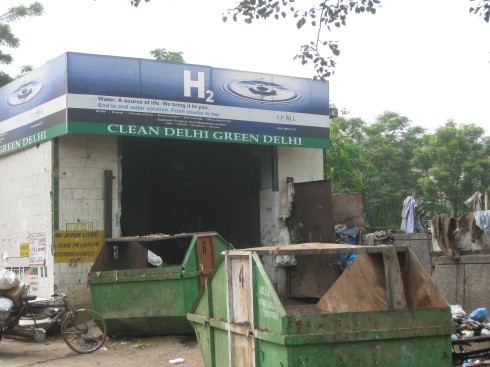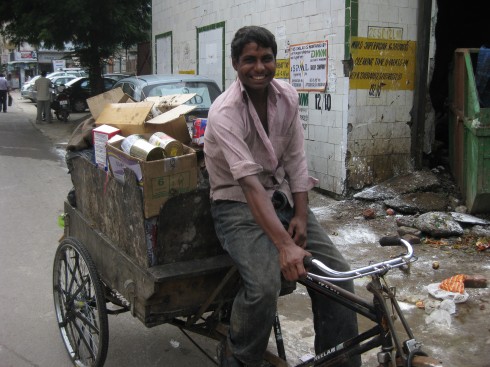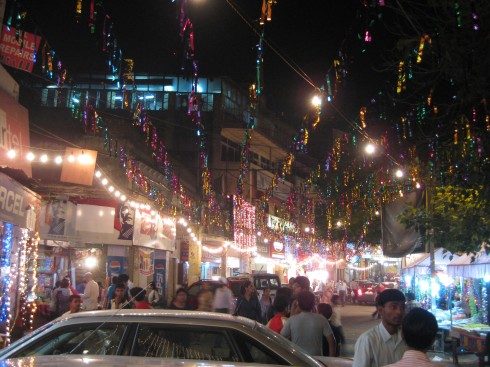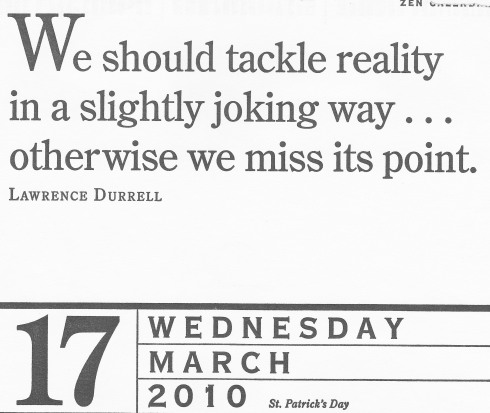… ‘Oh, where do we go now?…Sweet child o’ mine’. Guns ‘n’ Roses
Yep. That’s right: this song has been running relentlessly through my head while researching and writing this particular post. (Go on, treat yourself to a little late eighties glam-rock posturing. You know you want to).
What’s a global hit from the eighties got to do with upcycling?
It started a few weeks ago, during the Games, while talking to the South Asian correspondents for British and Australian news publications about what we were attempting to do.
I felt under-prepared for the interview – particularly when one of the journalists asked, “A lot of the city’s slums have been cleared out for this event. Why should the Games give you waste, like vinyl banners, when they could be used by poor people to re-build their homes?”

Image courtesy AP Photo/Manish Swarup via The Big Picture, Boston.com
Good. Question.
I fumbled a reply and the interview ended with neither journalist running a story (I know – it’s enough to make any half-savvy PR girl weep).
But it did get me to thinking: when it’s not going to landfill, where does all the waste in Delhi end up?
So, while humming the Gunner’s theme tune, I did a little research on the waste stream we are following from the Games – scrap banners.
We asked the company storing the banners where they thought the scrap was used. They told us they sell it for a small fee to the waste-dealing middlemen of Delhi – the kabadi wallas. Beyond this, they could only guess where the material went.
So I took my trusty little digi cam for a scout around the city to see what I could see:
It’s entirely possible the banners might get used as temporary shelters in one of Delhi’s jugghis (slums)…

Slum settlement on my route to work in East Delhi
…or covering loads on the back of trucks…

Protecting the cargo with the canvas
…or as a colourful roof for a rickshaw…

Pimp my ride with upcycling style
…and, of course, as excellent shades against Delhi’s ferocious Summer heat…

Look closely - these are actually Games banners converted to shade cloths!
So yeah, there’s a lot of informal repurposing, reusing and upcycling already going on in Delhi.
But with the city’s residents generating around 7,000 tonnes of waste a day, there’s also a lot of rubbish going straight to the dumps or simply being burnt on the streets…
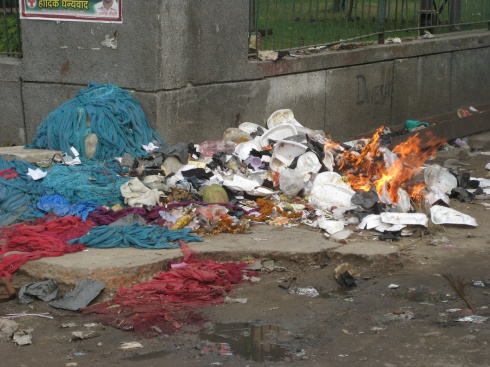
Burning waste, including plastics, on a street corner in Lajpat Nagar, Delhi
And it’s not just a problem for Delhi: although the Australian state of Victoria achieves pretty high recycling rates, the amount of waste generated by the 5.5 million population continues to increase each year.
Upcycling is one of many ways to tackle this problem by rethinking our headspace on waste – it’s about seeing value (and beauty) in things we might otherwise discard.
Getting back to that song, what would happen if we thought of our products as our own children?
We’d want to cherish them, protect them and never give them away. And, most of all, we’d do everything we could to stop them ending up here…
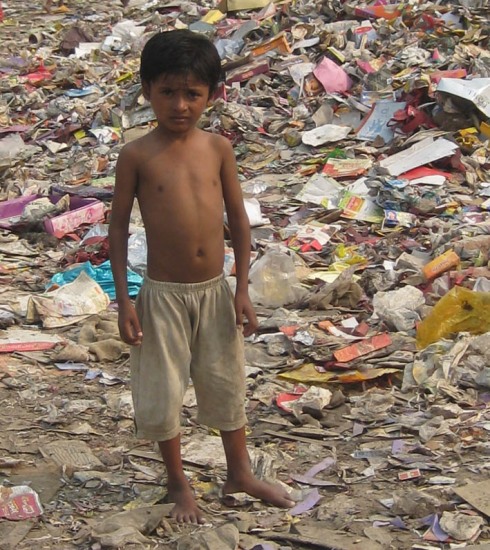
…wouldn’t we?
‘Now and then, when I see [his] face, [he] takes me away to that special place. And if I stared too long, I’d probably break down and cry’…
Tags: Commonwealth Games, Delhi, delhi 2010, Games waste, guns 'n' roses, jugghi, kabadi wallas, Liz Franzmann, monitoring, plastic waste, project need, PVC, slums, sweet child o mine, upcycled products, upcycling, Waste
